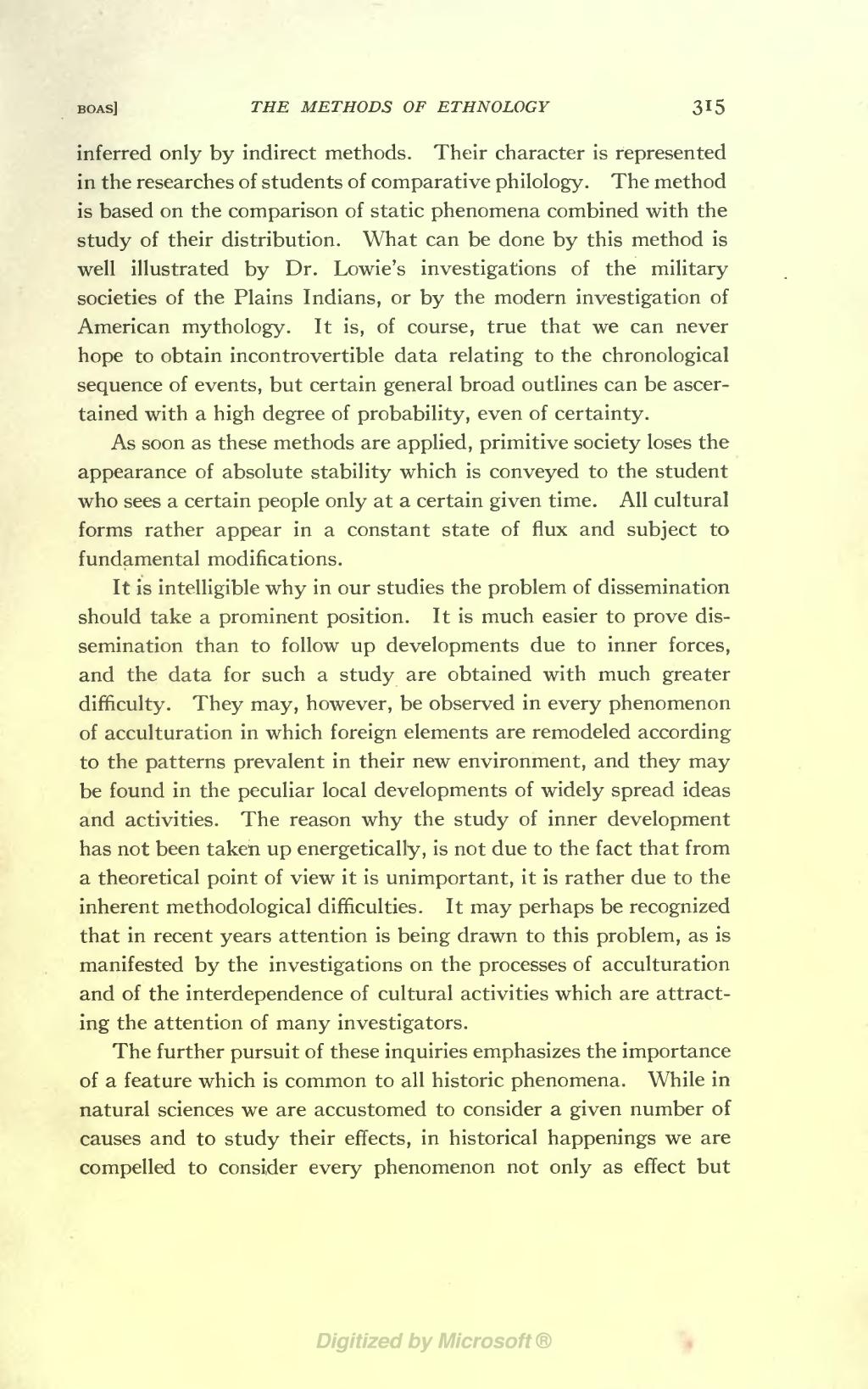inferred only by indirect methods. Their character is represented in the researches of students of comparative philology. The method is based on the comparison of static phenomena combined with the study of their distribution. What can be done by this method is well illustrated by Dr. Lewie’s investigations of the military societies of the Plains Indians, or by the modern investigation of American mythology. It is, of course, true that we can never hope to obtain incontrovertible data relating to the chronological sequence of events, but certain general broad outlines can be ascertained with a high degree of probability, even of certainty.
As soon as these methods are applied, primitive society loses the appearance of absolute stability which is conveyed to the student who sees a certain people only at a certain given time. All cultural forms rather appear in a constant state of flux and subject to fundamental modifications.
It is intelligible why in our studies the problem of dissemination should take a prominent position. It is much easier to prove dissemination than to follow up developments due to inner forces, and the data for such a study are obtained with much greater difficulty. They may, however, be observed in every phenomenon of acculturation in which foreign elements are remodeled according to the patterns prevalent in their new environment, and they may be found in the peculiar local developments of widely spread ideas and activities. The reason why the study of inner development has not been taken up energetically, is not due to the fact that from a theoretical point of view it is unimportant, it is rather due to the inherent methodological difficulties. It may perhaps be recognized that in recent years attention is being drawn to this problem, as is manifested by the investigations on the processes of acculturation and of the interdependence of cultural activities which are attracting the attention of many investigators.
The further pursuit of these inquiries emphasizes the importance of a feature which is common to all historic phenomena. While in natural sciences we are accustomed to consider a given number of causes and to study their effects, in historical happenings we are compelled to consider every phenomenon not only as effect but
